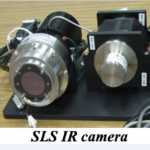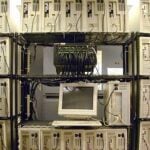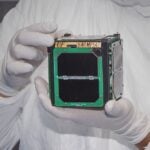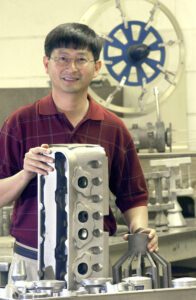High-Strength, Wear Resistant Aluminum Alloy (NASA 398)
Inducted In: 2018, Industrial Productivity/Manufacturing Technology
Light weight alloy technology with proven durability, longevity and reduced environmental impact
In 1993, the Partnership for Next-Generation Vehicles (PNGV) brought together federal laboratories, universities, automakers and other industry partners, with the common goal of increasing automotive fuel efficiency and reducing environmental impact. Towards this end, NASA Marshall Space Flight Center began work on its High-Strength, Wear-Resistant Aluminum Alloy.
Ford Motor Company recognized that their products could benefit from this new technology. NASA materials-science experts Jonathon Lee and Dr. Po-Shou Chen had significant experience developing high-strength, nickel-based super-alloys for the space program. While these materials would be too heavy for use in an automobile engine, Lee and Chen realized an aluminum alloy would be strong enough for a piston application and would significantly reduce overall engine weight.
Working together, Lee and Chen developed and patented a new aluminum alloy now known as NASA 398. This new alloy is stronger and durable enough for the piston application while significantly reducing the weight. Months of development and testing with Ford engineers led to a successful piston design using the new alloy. Test results for the new piston design were positive, however Ford chose not to pursue further development.
Federal funding for the PNGV program ended, but the NASA team recognized the commercial possibilities for their new alloy and continued to refine and patent the technology. However, this technology is by far the most successful commercial license to come out of NASA Marshall Space Flight Center.
Bombardier Recreational Products (BRP) was searching for design and durability improvements for their Evinrude line of marine engines. Working with the NASA team, Evinrude/BRP engineers proved the alloy met their stringent criteria and produced pistons using NASA 398 and later licensed the technology to use in their Evinrude E-TEC™ outboard engines.
An early customer, the ‘Twin City Fan’ company, applied the new alloy in their life-saving tunnel safety fan systems. The NASA 398 alloy helped ensure the critical systems functioned properly during emergency situations such as high intensity fires.
Another space technology generating millions in sales, reducing environmental impact and helping save lives.
Related Technologies

Strained Layer Superlattice (SLS)
Inducted In: Industrial Productivity/Manufacturing Technology
https://vimeo.com/1083588479/a949307161 The Strained Layer Superlattice (SLS) technology developed at NASA’s Jet Propulsion Laboratory is used to manufacture infrared detectors. The enhanced performance and cost-savings of this technology is a significant advancement over earlier technologies. This technology has been employed by…

Beowulf Computing Cluster
Inducted In: Communications Technology, Computer Technology, Featured, Industrial Productivity/Manufacturing Technology
A Beowulf Computing Cluster is a grouping of off-the-shelf computer hardware networked together with fast communication software. The resulting parallel processing power of the collection generates processing speeds faster than most super-computer systems used for complex processing – at a…

CubeSats
Inducted In: Computer Technology, Featured, Industrial Productivity/Manufacturing Technology
The origin story of the CubeSat idea is clear-cut and well-known. It was conceived by two engineering professors as a teaching tool for students to get hands-on experience with satellite functionality. In the 1990’s Professor Robert Twiggs was teaching engineering…

